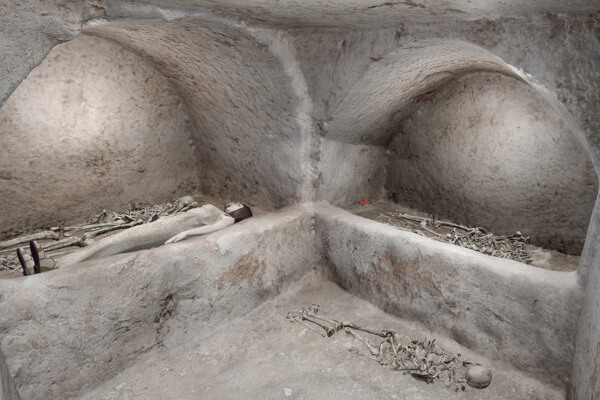Juliopolis Ancient City

Vehicle
To the center:39,5 km
About
Juliopolis Ancient City is located approximately 122 km northwest of Ankara, in the Çayırhan district of Nallıhan, at the Gülşehri Mevkii near the Skopas River (Aladağ Creek), which used to flow through the old village of Sarılar. It is known that the ancient city was submerged under the waters of the Sarıyar Dam Lake, which was built in the 1950s in this village. Some remnants of the city can still be partially seen on the northeastern shores of the reservoir. The necropolis of the city is located on the limestone cliffs on the northern coast of the reservoir, divided by the Aladağ Creek.
Except for a salvage excavation carried out by the Museum of Anatolian Civilizations in 1991, no previous work has been done in the Juliopolis Necropolis, which has been heavily damaged due to illegal excavations until 2009. In order to prevent this destruction and protect the area while shedding light on its history, excavations in the Juliopolis Necropolis have been conducted since 2009 by a team of museum archaeologists led by Melih Arslan, the Director of the Museum of Anatolian Civilizations. As a result of the archaeological excavations carried out in the necropolis since 2009, a total of 434 tombs have been unearthed. These tombs consist of 70 chambered rock-cut tombs, 7 broken-roofed coffin tombs, 263 coffin-shaped rock-cut tombs, 84 simple earthen graves, 7 sarcophagus tombs, 1 urn tomb, and 2 unfinished tombs.
Out of the total of 434 excavated tombs, 37 were damaged by ancient looters, and 34 were damaged by modern-day smugglers. 363 tombs were identified and excavated by our team. In addition to the tombs detected through the geomagnetic survey method in the necropolis, work has also been carried out in the tombs damaged by illegal excavations. Moreover, numerous artifacts that were not seen by the looters, sometimes intact and sometimes in fragments, have been recovered from these tombs, enabling the identification of their types and determination of their periods. Furthermore, the clues obtained from both ancient and modern looting have helped determine when the tombs were looted. Thanks to the scientific salvage excavations we initiated, the illicit excavations in the necropolis have been prevented, and Juliopolis Ancient City’s Necropolis has been introduced to the public through a series of conferences and publications, thus enhancing its tourism potential.
Thanks to the large number of coins minted in the Juliopolis mint, which were found during the excavations in the necropolis since 2009, it is now certain that this area is the necropolis of the city of Juliopolis. Juliopolis is the eastern border city of Bithynia, located on the border between the ancient regions of Bithynia and Galatia. While Juliopolis was initially a village inhabited since the Phrygian period, it was named Gordioukome (Gordios’ village) after Gordios, the founding king of the Phrygians. If this assumption is correct, the existence of Gordiokome Village can be traced back to the 8th century BCE. The city continued its existence as a small town during the Hellenistic period. Strabo mentions in his work “Geography” that the town was expanded into a city by Kleon, a powerful bandit leader named Kleon, who lived in a fortified castle (Kallydion) in the Olympos Mountains during the 1st century BCE. Kleon initially allied
